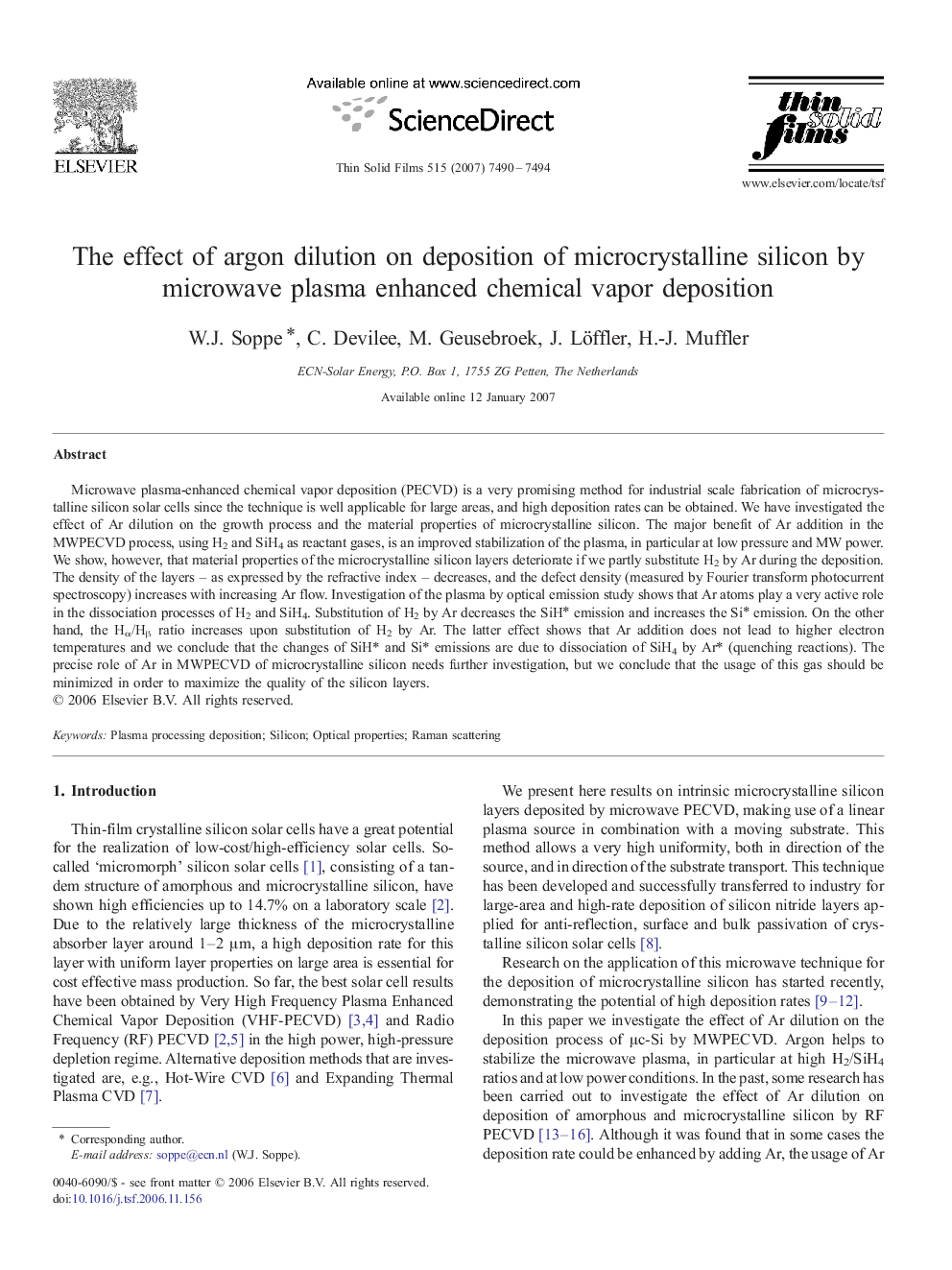| Article ID | Journal | Published Year | Pages | File Type |
|---|---|---|---|---|
| 1674526 | Thin Solid Films | 2007 | 5 Pages |
Microwave plasma-enhanced chemical vapor deposition (PECVD) is a very promising method for industrial scale fabrication of microcrystalline silicon solar cells since the technique is well applicable for large areas, and high deposition rates can be obtained. We have investigated the effect of Ar dilution on the growth process and the material properties of microcrystalline silicon. The major benefit of Ar addition in the MWPECVD process, using H2 and SiH4 as reactant gases, is an improved stabilization of the plasma, in particular at low pressure and MW power. We show, however, that material properties of the microcrystalline silicon layers deteriorate if we partly substitute H2 by Ar during the deposition. The density of the layers – as expressed by the refractive index – decreases, and the defect density (measured by Fourier transform photocurrent spectroscopy) increases with increasing Ar flow. Investigation of the plasma by optical emission study shows that Ar atoms play a very active role in the dissociation processes of H2 and SiH4. Substitution of H2 by Ar decreases the SiH⁎ emission and increases the Si⁎ emission. On the other hand, the Hα/Hβ ratio increases upon substitution of H2 by Ar. The latter effect shows that Ar addition does not lead to higher electron temperatures and we conclude that the changes of SiH⁎ and Si⁎ emissions are due to dissociation of SiH4 by Ar⁎ (quenching reactions). The precise role of Ar in MWPECVD of microcrystalline silicon needs further investigation, but we conclude that the usage of this gas should be minimized in order to maximize the quality of the silicon layers.
